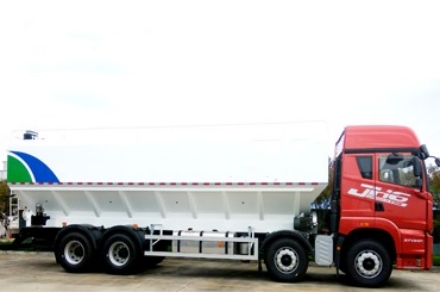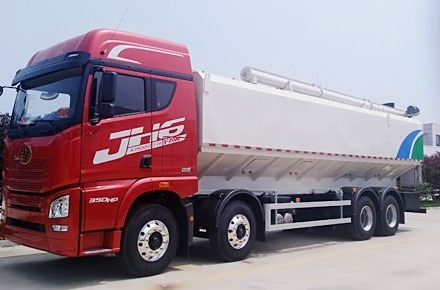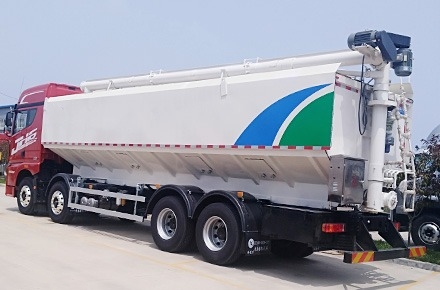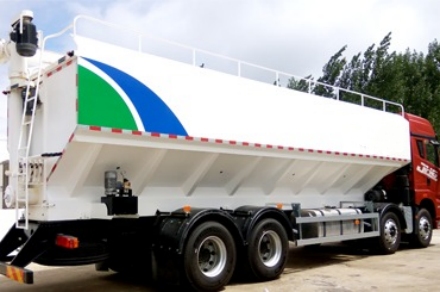Dry bulk trucks are specialized vehicles designed for the transportation of dry, loose materials such as cement, flour, plastic pellets, lime, sand, fly ash, and other granular or powdered substances. These trucks are commonly seen in industries like construction, agriculture, food processing, and chemicals, where materials must be delivered in a clean, efficient, and contamination-free manner. One of the most important characteristics to understand about these trucks is their capacity, as it directly impacts operational efficiency, cost, and logistical planning. But what exactly is the capacity of a dry bulk truck? The answer depends on several factors, including truck design, local regulations, the density of the material being hauled, and the trailer configuration.
Understanding Dry Bulk Truck Capacity
Dry bulk trucks are often referred to as pneumatic tank trucks because they use pressurized air to unload their contents through hoses. Unlike liquid tankers, which rely on pumps and gravity, these trucks need air compressors and are sealed to keep the contents dry and uncontaminated.
The capacity of a dry bulk truck can be expressed in several ways:
- Volume (measured in cubic meters or cubic feet)
- Weight (measured in tons or pounds)
- Payload (the weight of the material the truck can carry)
Each of these measures gives different insights into what the truck can transport, and together they determine how much product can be moved efficiently in a single trip.
Volume Capacity of Dry Bulk Trucks
In terms of volume, a standard dry bulk trailer typically ranges from 800 to 1,600 cubic feet (approximately 22.7 to 45.3 cubic meters). The most common sizes fall between 1,000 and 1,400 cubic feet. The size chosen usually depends on the type of material to be hauled and the limitations imposed by axle weights and road regulations.
For instance:
- A 1,040 cu ft trailer is common for high-density materials like cement.
- A 1,600 cu ft trailer may be used for lighter materials like plastic pellets or flour.
It’s important to remember that just because a trailer has a large volume capacity doesn’t mean it can always be filled to the brim. Heavier materials may reach the truck’s weight limit before the volume is filled, whereas lighter materials may fill the tank without exceeding the weight limit.
Weight Capacity and Payload
In the United States, federal law generally allows a gross vehicle weight rating (GVWR) of up to 80,000 pounds (36,287 kilograms) for trucks on interstate highways, including the truck, trailer, and cargo. The actual payload (i.e., the weight of the dry bulk material itself) depends on the empty weight of the truck and trailer, which typically weighs between 30,000 and 35,000 pounds (13,600 to 15,900 kg).
This means the maximum payload a dry bulk truck can legally carry is approximately:
- 45,000 to 50,000 pounds (20,400 to 22,700 kg)
The payload capacity is crucial when transporting dense materials. For instance:
- Cement has a bulk density of about 94 lbs/ft³, so a 1,000 cu ft tank could theoretically hold 94,000 lbs of cement, which far exceeds legal weight limits. Hence, only about half of the volume can be utilized before hitting the weight cap.
- Plastic pellets, on the other hand, have a density of around 35 lbs/ft³, meaning the trailer can often be filled without exceeding weight limits.
Types of Dry Bulk Trailers and Their Impact on Capacity
Several types of trailers affect how much a dry bulk truck can carry:
- Single-Compartment Trailers
These are the most common and provide a straightforward solution for hauling a single material. Their capacity can range from 1,000 to 1,600 cubic feet. - Multi-Compartment Trailers
These have two or more compartments for carrying different materials simultaneously. While this offers flexibility, it may reduce overall capacity due to added structure and complexity. - Aluminum vs. Steel Trailers
Aluminum trailers are lighter, allowing for higher payloads within legal weight limits, but they are more expensive. Steel trailers are heavier and more durable, but reduce the amount of material that can be carried legally. - High-Cube Trailers
Designed for low-density materials, high-cube trailers maximize volume with capacities pushing 1,600 cubic feet or more.
International Capacity Variations
Different countries have different regulations and typical configurations. For example:
- In Europe, where roads and infrastructure differ from North America, dry bulk trailers are often smaller and operate under different axle weight limits. European dry bulk tankers usually range between 35 and 60 cubic meters in volume.
- In Australia, where truck weights can be much higher due to different regulations and road-train use, dry bulk vehicles can carry more than 50 tonnes of material, especially in mining and industrial operations.
Factors Affecting Capacity Utilization
Several factors determine whether a truck’s full capacity can be used:
- Material Density: High-density materials like cement or lime reach legal weight limits before filling the tank. Low-density materials like fly ash or flour can often fill the tank.
- Moisture Sensitivity: Some materials expand or clump with moisture, reducing how much can be safely loaded.
- Aeration and Flowability: Some powders require air pads or vibration systems to help them unload smoothly, which can also slightly affect load capacity.
- Regulatory Constraints: Bridge laws, axle weight restrictions, and local laws may limit total load, even if volume and payload capacity allow more.
Conclusion
The capacity of a dry bulk truck is not a fixed number but rather a range influenced by volume, weight limits, trailer design, material properties, and legal regulations. On average, these trucks can hold between 1,000 to 1,600 cubic feet of dry product and haul up to 25 tons (50,000 lbs), depending on material density and local laws. Understanding these capacities is critical for optimizing transportation efficiency, reducing freight costs, and ensuring compliance with transportation laws.
Whether you’re hauling cement to a construction site, delivering flour to a bakery, or transporting plastic pellets for manufacturing, selecting the right dry bulk truck with an appropriate capacity is essential to keeping your operation running smoothly.





